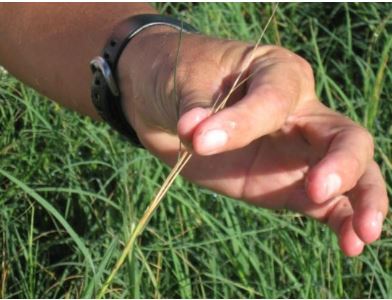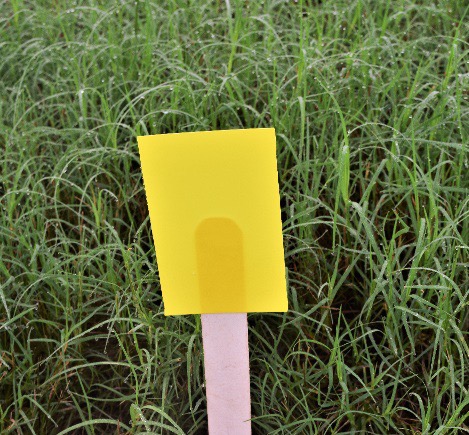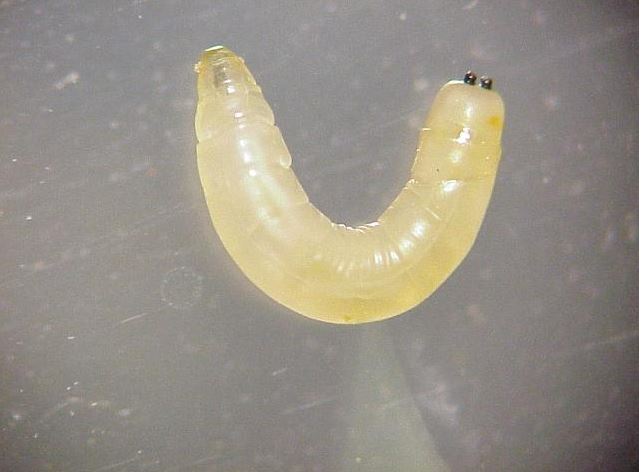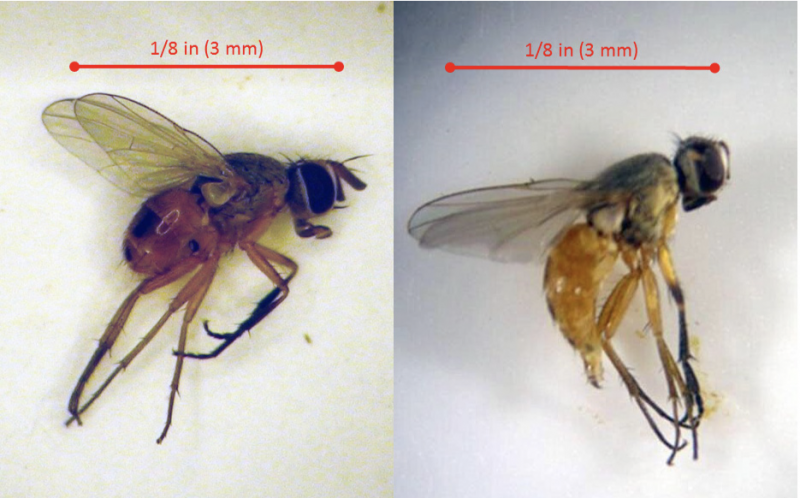
Figure 1: Damage to a stem of Bermudagrass from a Bermudagrass Stem Maggot. Photo Credit: Tim Wilson, UF/IFAS
A lot of research has been conducted to create mitigation strategies for the Bermudagrass Stem Maggot (BSM) throughout the Southeast. This pesky little fly has caused headache and heartache for Bermudagrass hay producers in the Panhandle area. While we have proven methods to reduce BSM damage, many may find these challenging in the current economic climate.
If you are unfamiliar with BSM, you might want to check out the UF/IFAS publication: Bermudagrass Stem Maggot—A New Pest in Florida or the UGA Extension bulletin: Managing Bermudagrass Stem Maggots. Both these documents go over identification, morphology, habitat, environmental conditions, and yield loss data. Most importantly, you need to be aware of what the damage (figure 1) looks like and what the larva (figure 2) and adult flies look like (figure 3). A common method forage producers use if the sticky card for scouting (figure 4). Proper scouting will let you know when adult flies are prevalent in the field, and when you need to start your management practices for BSM.
–
–
The most important part for managing the cost of BSM management is to know when to start scouting. Most of the Panhandle area, along the Georgia and Alabama state lines should see flies appearing in early June, with continuing prevalence through July. According to Dr. Will Hudson, UGA Extension Entomologist, if you find BSM infestations in the July cutting, then you will need to make sure to have control management to protect remaining harvests for the year. Scouting and identifying BSM as early as possible is the first and most important step. If you are wanting to decrease the number spray applications in 2022, given the economic factors, then you must be scouting routinely and time your sprays for maximum effectiveness. The recommended insecticide is a pyrethroid 10 days after harvest and, if conditions keep the grass from regrowing quickly, an additional spray about 7 days after the first. So, plan accordingly for scouting to give yourself enough time to apply insecticide accordingly.

Figure 4: Yellow Card Sticky Trap for Bermudagrass Stem Maggot flies. Photo Credit: Lisa Baxter, UGA Extension
–
Dr. Lisa Baxter, UGA Extension Forage Specialist, suggests another way to minimize the cost of control is to make sure you are following good forage management practices to ensure your grass is achieving optimum performance. These practices include timely cutting, cutting at the appropriate height, controlling weeds, maintaining a balanced fertilizer plan, etc. Maintaining a healthy Bermudagrass stand will not replace insecticide, but reducing a spray or two can end up saving money. Dr. Hudson also suggests in 2022, with supply chain volatility, that you keep at least half your planned insecticide on hand, so you can assure you will be able to spray at the correct time. Farmers and ranchers can expect to spray Bermudagrass fields with 4-8 applications during the season. You should plan to have enough product on hand for 2-4 applications. Dr. Hudson noted that If army worm pressure is as bad in 2022 as it was in 2021, insecticide supplies could get tighter than they already are.
Another way to reduce spray and limit costs is by actual spray technique. If you are using the old method of tracking where you sprayed by the tire tracks or some other imprecise marking technique, then you are allowing for the likelihood of skips and gaps in your spray in some areas and over spray in other areas. Without complete coverage with a uniform spray across the field, you allow untreated areas for the BSM flies to hide, and quickly repopulate. Using GPS guidance technology to be precise in your application and get as close to complete 100% coverage in the field will improve the efficacy of your spray. According to Dr. Baxter, Guidance aids such as light bars help maintain pass-to-pass distance, which results in fewer total passes and increased field efficiency. This can ultimately result in more efficient management of crop inputs including time, fuel, and chemicals.
While these uncertain economic times can make any Bermudagrass hay producer skeptical in regards to profitability in 2022, any improvement in efficiency could help ease those concerns. While input costs associated with BSM management have significantly increased in 2022, there is no reason to be thinking about the drastic idea of plowing the field and restarting in another forage variety, as I had a producer inquire about recently. As the old saying goes, no reason to throw the baby out with the bath water. A few good management practice changes can help you manage costs now and make you more efficient and profitable in the long run.
- Managing Wild Hogs in theFlorida Panhandle: Strategies for Farmers and Landowners - October 24, 2025
- 2025 Small Ruminant Grazing Field Day – November 5 - October 3, 2025
- After an Eventful Winter, Inspect and Prepare Equipment for the Growing Season - April 11, 2025


